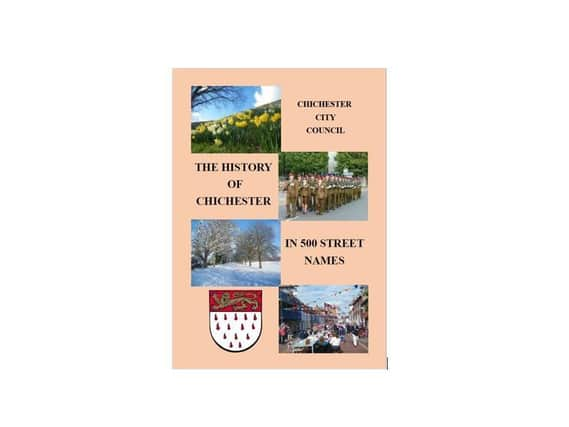Exploring the history of Chichester's street names


Ken Green’s The Street Names of Chichester was first published in 1996; a second edition, revised and updated by Chichester City Council, came out in 2008.
Now comes a new and extended edition, The History of Chichester in 500 Street Names, revised by David Wilson and by long-standing city councillor and former mayor Anne Scicluna.
Advertisement
Hide AdAdvertisement
Hide AdThe book is available at £5 from Chichester City Council. Anne also hopes it will be available from The Novium, Kim’s Bookshop and the West Sussex Record Office.
Anne, who is also one of the founding members of the Festival of Chichester committee, said: “The original book was quite smallish, but there are many, many more streets now. Ken did the main book and the original research, but there are certainly dozens of new names now.”
As the book points out, many of the names have survived for centuries, with some being unique to the city. But with some of the streets more than a thousand years old, it’s inevitable that the origins of their names will never be known for sure.
As for the newer names, some of them were very straightforward to find; sometimes much more difficult.
Advertisement
Hide AdAdvertisement
Hide AdRoussillon Park, developed for housing between 2012 and 2017, sits on the site of the old Roussillon Barracks – a fact commemorated in many of the names including The Queen Juliana Green, Donegall Avenue and Otway Road, names linking with the site’s history.
Charlotte Avenue proved rather harder to track down. Various possible Charlottes were suggested before it was realised that the Charlotte in question was the wife of the fourth Duke of Richmond – the Charlotte who hosted the celebrated ball in Brussels on the eve of the Battle of Waterloo. It was at this ball that the news that Napoleon was within striking distance of Brussels was handed to the Duke of Wellington. Many officers left immediately to rejoin their regiments, still in dress uniform.
Other names are rather more recent in origin, marking councillors who have served the city, including Peter Weston Place, Kathleen Gardens, Siggs Court and Stride Close.
Other names record events, such as Liberator Place, on the site where a World War Two Liberator bomber crashed on the city.
The result is a book which offers fascinating reading.
Advertisement
Hide AdAdvertisement
Hide Ad“What happened,” Anne says, “is that David Wilson got hold of the revised edition from 2008 and thought that there were lots of streets missing. He went to (town clerk) Rodney Duggua and asked if it was time to update the book. Rodney said ‘You know what to do!’ And that’s when I got involved as I can’t keep out of these things! David and I more or less did it together.
“David did most of the computer research and I worked on memories and the people that I know.
“When it had come to the first revision in 2008, Ken hadn’t wanted to do it and had said ‘Did the city council want to take it on?’ I got involved with that as well, around the edges, and a couple of officers of the city council worked on it. And Ken was very happy that we took it over now for the new edition. I have spoken to Ken several times about it.”